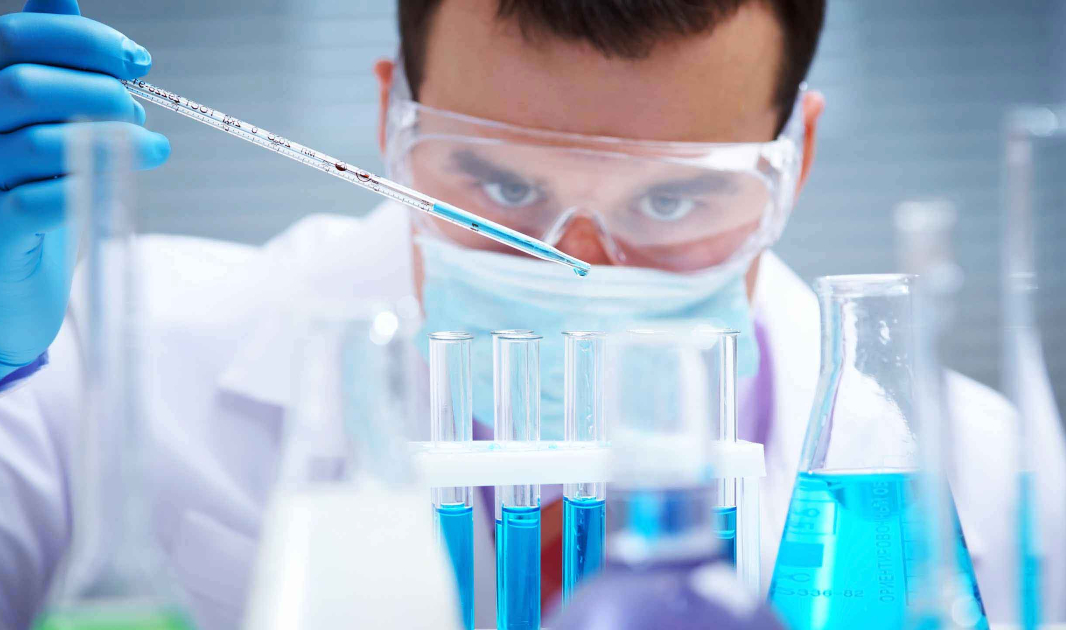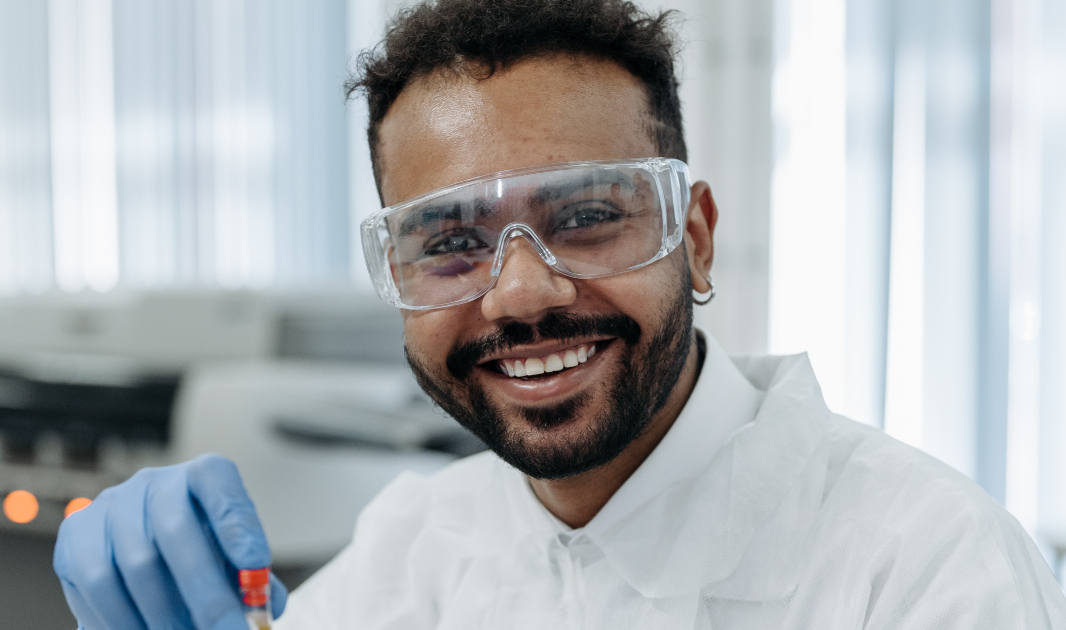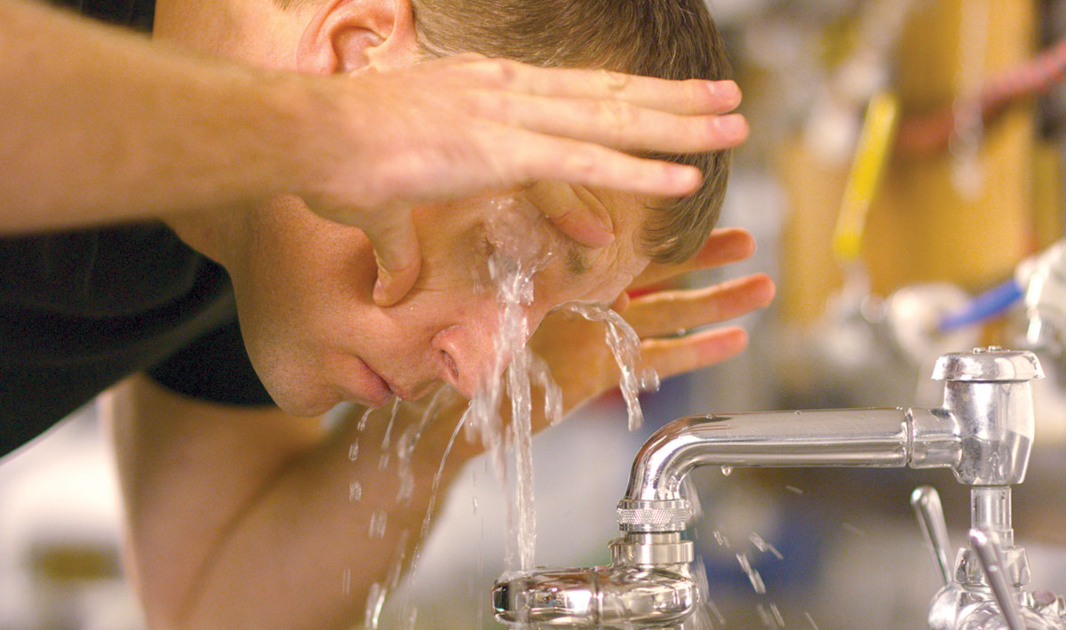It’s a distressing fact that thousands of eye injuries occur at work each year. Some of the accidents are minor but others, around 10 to 20%, result in partial or full blindness.
It’s therefore essential for employers and staff to pay attention to eye safety at work. Safety experts and eye doctors believe the right eye protection can lessen the severity or even prevent 90% of workplace eye injuries.
Chemicals or foreign objects in the eye and scratches on the cornea are common eye injuries that occur at work. Other common eye injuries come from fluids splashed in the eye, burns from steam and ultraviolet or infrared radiation exposure.
In addition, laboratory staff and health care workers may be at risk of acquiring infectious diseases from eye exposure. Some infectious diseases can be transmitted through the mucous membranes of the eye. This can occur through direct contact with splashes of blood, respiratory droplets generated during coughing, or from touching the eyes with contaminated fingers or other objects.
Science workers experience eye injuries on the job for two major reasons:
- They were not wearing proper eye protection
- They were wearing the wrong kind of protection for the job
EU health and safety rules require laboratory workers to use eye and face protection whenever there is a reasonable probability of injury that could be prevented by such equipment. Personal protective eyewear, such as goggles, face shields, safety glasses or full face respirators must be used when an eye hazard exists. The necessary eye protection depends upon the type of hazard, the circumstances of exposure, other protective equipment used and individual vision needs.

What are the potential eye hazards at work?
Workplace eye protection is needed when the following potential eye hazards are present:
- Projectiles (dust, concrete, metal, wood and other particles)
- Chemicals (splashes and fumes)
- Radiation (especially visible light, ultraviolet radiation, heat or infrared radiation, and lasers)
- Bloodborne pathogens (hepatitis or HIV) from blood and body fluids
Some working conditions include multiple eye hazards. The proper eye protection takes all hazards into account.
The type of safety eye protection you should wear depends on the hazards in your workplace:
- If you are working in a scientific workspace that has particles, flying objects or dust, you should at least wear safety glasses with side protection.
- If you are working with chemicals, you should wear goggles.
- If you are working near hazardous radiation (lasers or fibre optics) you must use special-purpose safety glasses, goggles or face shields designed for that task.
In addition, employers need to take steps to make the laboratory work environment as safe as possible. This includes:
- Conducting an eye hazard assessment of the science lab
- Removing or reducing eye hazards where possible
- Providing appropriate safety eyewear and requiring employees to wear it

How can I protect my eyes from injury in the lab?
There are four things you can do to protect your eyes from injury in the lab:
- Know the eye safety dangers at your work.
- Eliminate hazards before starting work by using machine guards, work screens or other engineering controls.
- Use proper eye protection.
- Keep your safety eyewear in good condition and have it replaced if it becomes damaged.
Types of eye protection in the science lab include:
- Nonprescription and prescription safety glasses. Although safety glasses may look like normal dress eyewear, they are designed to provide significantly more eye protection. The lenses and frames are much stronger than regular eyeglasses. Safety glasses provide eye protection for general working conditions where there may be dust, chips or flying particles. Side shields and wraparound-style safety glasses can provide additional side protection in the science laboratory.
- Goggles. Goggles provide protection from impact, dust and chemical splash. Like safety glasses, safety goggles are highly impact-resistant. In addition, they provide a secure shield around the entire eye and protect against hazards coming from any direction. Goggles can be worn over prescription glasses and contact lenses.
- Face shields and helmets. Full face shields protect workers exposed to chemicals, heat or blood-borne pathogens. Helmets are used for welding or working with molten materials. Face shields and helmets should not be the only protective eyewear. They need to be used in conjunction with safety glasses or goggles, so the eyes are protected when the shield is lifted.
- Special protection. Helmets or goggles with special filters to protect the eyes from optical radiation exposure should be used for welding or working with lasers.
Safety glasses must fit properly to provide adequate protection. Also, eye protection devices must be properly maintained. Scratched and dirty devices reduce vision, cause glare and may contribute to accidents.

What should be done in an eye emergency?
Seek medical attention as soon as possible following an injury, particularly if you have pain in the eye, blurred vision or loss of any vision. Several simple first aid steps can and should be taken until medical assistance is obtained.
First aid for chemicals in the eye:
- Immediately flush the eye with water for at least 15 minutes. Place the eye under a faucet or shower, use a garden hose, or pour water into the eye from a clean container.
- If you are wearing contact lenses, immediately remove them before flushing the eye.
- Do not try to neutralize the chemical with other substances.
- Do not bandage the eye.
- Seek immediate medical attention after flushing.
First aid for particles in the eye:
- Do not rub the eye.
- Try to let your tears wash the speck out, or irrigate the eye with an artificial tear solution.
- Try lifting the upper eyelid outward and down over the lower eyelid to remove the particle.
- If the particle does not wash out, keep the eye closed, bandage it lightly and seek medical care.Some particles, particularly metallic ones, can cause rusting spots on the eye if left untreated for several days. If you are unsure if the object is gone, do not delay medical care.
First aid for blows to the eye:
- Gently apply a cold compress without putting pressure on the eye. Crushed ice in a plastic bag can be placed gently on the injured eye to reduce pain and swelling.
- In cases of severe pain or reduced vision, seek immediate medical care.
First aid for cuts and punctures to the eye or eyelid:
- Do not wash out the eye.
- Do not attempt to remove an object that is stuck in the eye.
- Cover the eye with a rigid shield, like the bottom half of a paper cup.
- Seek immediate medical care.
Get to know us and our experts
Headlines, hot topics, and more from Evolve
Laboratory equipment and much more
Whatever your next step, we’ll be by your side.
Evolve is Malta’s fastest growing science company, offering lab design, scientific consultancy services, environmental monitoring and the latest medical equipment from internationally trusted brands.
We have a comprehensive range of scientific equipment and medical supplies, shaped to suit the needs of hospitals, clinics, heritage sites, school labs, universities, medical cannabis facilities and leading pharmaceutical companies.
To find out about how Evolve can help you take your next step, get in touch with us today.


